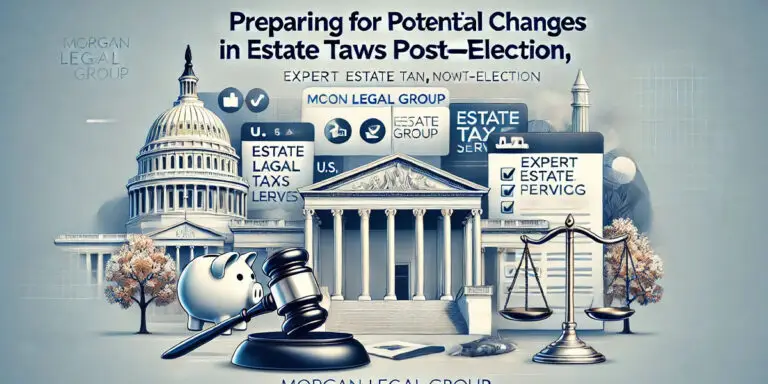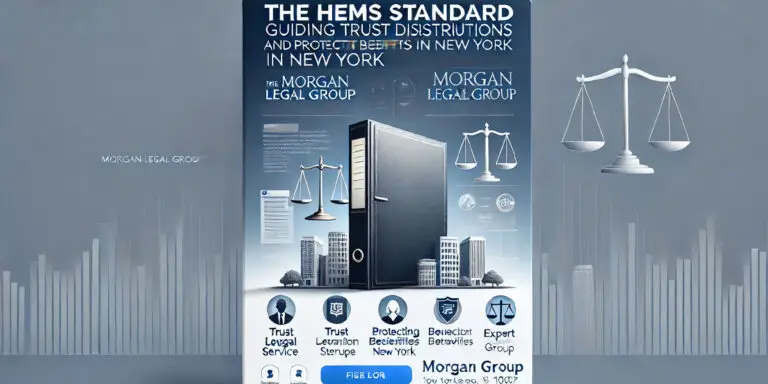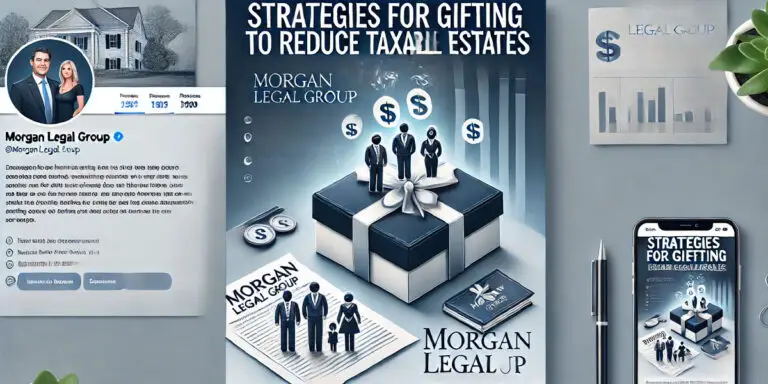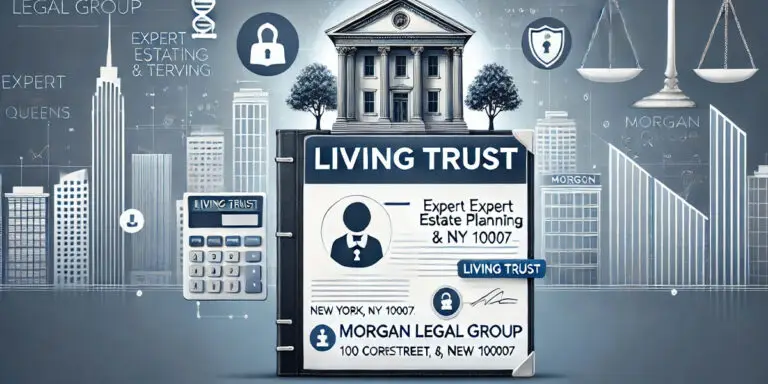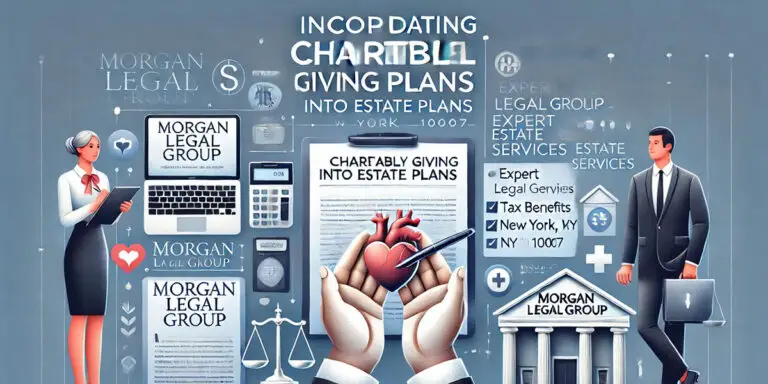As an expert New York estate planning attorney with many years of experience, I can tell you that 2025 is the single most critical year for estate planning I have witnessed in my career. A “ticking time bomb” in the federal tax code is set to detonate on January 1, 2026. This is not a proposal. It is not a political debate. It is written into current law.
This event, known as the “TCJA Sunset,” will slash the federal estate tax exemption in half. For successful New York families, this is a five-alarm fire. The “golden era” of high exemptions is ending, and the 40% federal estate tax is about to become a harsh reality for thousands of families who, just last year, thought they were safe.
Inaction is no longer a strategy; it is a choice to forfeit millions of your family’s legacy to the IRS. At Morgan Legal Group, our experience with over 1,000 successful cases has shown us that proactive planning is the only defense against devastating, and entirely avoidable, financial loss. We are sounding the alarm. This guide is your 2025 “use it or lose it” battle plan. Your opportunity to act is closing.
What is the 2026 “TCJA Sunset”?
To understand the danger, you must first understand the law. The 2017 Tax Cuts and Jobs Act (TCJA) was a massive overhaul of the tax code. One of its most significant provisions was that it *doubled* the federal estate tax exemption. This is the amount of money you can leave to your heirs without paying a single dollar in federal estate tax.
The “Golden Era”: 2018-2025
Because of the TCJA, this exemption skyrocketed. With inflation adjustments, the 2025 federal exemption stands at a historic high of $13.61 million per person. This means a single individual can shield $13.61 million. A married couple, using a provision called “portability,” can shield a combined $27.22 million from the 40% federal estate tax. This historic high made the estate tax “a problem for billionaires.” Most successful families in New York City, even with high-value real estate, fell comfortably below this threshold.
The “Sunset” Provision: The Clock Strikes Midnight
This is the critical part. To get the TCJA passed through Congress under special budget rules, many of its key provisions were made temporary. They were written with a legal “sunset” provision, an expiration date. That date is January 1, 2026.
On that date, the law automatically reverts to its pre-2017 levels. The $13.61 million exemption will be cut in half. While we do not know the *exact* inflation-adjusted number, all experts project it will be approximately $7 million per person (or even slightly less, around $6.9 million). This is a staggering $6.5 million reduction in protection, per person, overnight.
Who Does This Affect? The $10-20 Million Estate
This is no longer a “billionaire problem.” This is a “successful New Yorker” problem. This is a threat to doctors, business owners, and anyone who has owned Brooklyn real estate for 20 years. Consider a married couple in Westchester.
- Their Assets: $4M home, $6M in investments & 401(k)s, $3M in combined life insurance.
- Total Estate: $13 million.
- In 2025: Their $13M estate is $14.22 million *under* the $27.22M federal exemption. They owe $0.
- In 2026: The federal exemption drops to an estimated $14 million ($7M per person). Their $13M estate is safe… *if* they have the right trust planning. If they have a “simple will,” their plan will fail, as we’ll see.
Now let’s take a $15 million estate. In 2025, they owe $0. In 2026, their estate is $1M *over* the new ~$14M limit. This triggers a $400,000 federal tax bill that did not exist before. This tax is a direct result of inaction. Every successful individual in the $7-20M range is now a target. Contact us to find out your specific exposure.
The New York “Double Whammy”: Why We Get Hit Hardest
For residents of New York, the federal sunset is only half the story. Our state has its own, separate estate tax system that is one of the most punitive in the country. This creates a “double whammy” where families can be hit by *both* state and federal taxes, often due to a “simple” plan that fails to account for NY’s unique laws.
Whammy #1: The Notorious New York “Cliff Tax”
New York has its own estate tax exemption, which is $6.94 million in 2025. This is already much lower than the 2025 *federal* exemption. But the real danger is the “cliff.”
Most tax systems are marginal. If you go over the limit, you pay tax on the *overage*. New York is different. If your taxable estate is more than 105% of the $6.94M exemption (i.e., just $7.287 million), you do not just pay tax on the overage. You lose the entire $6.94M exemption and pay tax from dollar one.
Here is an example that we see in our practice:
- An estate worth $6.94 million owes $0 in NYS estate tax.
- An estate worth $7.3 million (just $360,000 over) falls off the cliff. The *entire* $7.3 million is taxed. The bill is approximately $684,000.
A $360,000 difference in assets results in a $684,000 tax bill. This is not a typo. This fiscal cliff makes precise estate planning a non-negotiable necessity in New York.
Whammy #2: New York Has No “Portability”
This is the planning trap that snares thousands. At the federal level, married couples can use “portability.” This means if the first spouse dies and only uses $3M of their $13.61M exemption, the surviving spouse can “port” the unused $10.61M and add it to their own. This is how couples easily shield $27.22M federally.
New York State does NOT recognize portability.
The $6.94 million New York exemption is “use it or lose it” for each spouse. If you have a “simple will” that leaves everything to your spouse (which is tax-free), you have *wasted* your $6.94M NY exemption. When the surviving spouse dies with all the combined assets, they only have *their own* $6.94M exemption. This is a common and costly mistake that pushes many surviving spouses over the NY “cliff.”
The Perfect Storm: How a “Simple Plan” Creates a $5M Tax Bill
Let’s see how this all comes together. Let’s take a Long Island couple with a $15 million estate.
- They have simple wills.
- Husband dies in 2025. Everything goes to Wife. His $6.94M NY exemption is wasted.
- Wife now dies in 2026 with a $15M estate.
- NYS Tax: Her $15M estate is over the $6.94M “cliff.” Her estate owes $1.98 million in New York estate tax.
- Federal Tax: The federal exemption is now ~$7M. Her $15M estate is $8M *over* the new federal limit. She owes $3.2 million in federal tax.
- Total Tax Bill: Over $5.1 million.
This entire $5.1 million tax bill was 100% preventable with the strategies we are about to discuss. This is the cost of a “simple” plan. This is why Russel Morgan, with his many years of experience, insists on comprehensive, trust-based planning. As our 900+ positive online reviews show, clients are deeply relieved when they realize they’ve just saved their family from this exact scenario.
The 2025 “Use It or Lose It” Strategy
Here is the good news. The IRS has given us a green light. In 2019, the Treasury Department issued final “anti-clawback” regulations. This means any gifts you make in 2025 using the high $13.61M exemption are safe. If you give away $10M in 2025, and the exemption drops to $7M in 2026, the IRS cannot “claw back” the extra $3M you used.
This creates a simple, urgent mandate: Use it or lose it.
2025 is the last full year to make large, strategic gifts to move assets out of your taxable estate *permanently*, using an exemption amount that will not exist in 13 months. This is not about just writing checks to your children (though that can be part of it). This is about using sophisticated legal structures to transfer wealth tax-free while often retaining some benefit or control.
This is not a DIY project. This is complex, high-stakes legal work. Many clients find us by searching for an “Estate planning attorney near me 10044” (Roosevelt Island) or in other high-value NYC zip codes. They’re searching locally because they’re realizing this massive federal tax problem needs a hands-on, expert New York attorney to solve it. This is the work of an advanced estate planning firm.
The Legal Fortress: Tools to Fight the 2026 Sunset
A simple Revocable Living Trust is a vital tool for avoiding probate, but it does nothing to save you from estate taxes. A Revocable Trust is “invisible” to the IRS and NYS Tax Department. To fight the “tax man,” you need Irrevocable Trusts. These are the primary weapons we use to protect high-net-worth families.
Weapon 1: The Spousal Lifetime Access Trust (SLAT)
This is the most popular and powerful tool in 2025. A SLAT is a brilliant strategy for married couples. Here is how it works:
- You (Spouse A) make a large gift to an Irrevocable Trust. This gift uses up a portion of your $13.61M exemption.
- The beneficiary of this trust is your spouse (Spouse B) and your children.
- The assets in the trust, plus all their future growth, are now 100% outside of your estate and your spouse’s estate. They are protected from the 40% tax.
The “Magic” of the SLAT: The “magic” is that your spouse (Spouse B) can receive distributions from the trust. This means the money is out of your estate, but it is not “gone.” Your spouse still has *indirect* access to it if the family needs it. This is how you “have your cake and eat it too” in estate planning. A couple can even set up “Non-Reciprocal” SLATs for each other, effectively doubling the protection. This is a strategy we have implemented for hundreds of clients.
Weapon 2: The Irrevocable Life Insurance Trust (ILIT)
This is a fundamental error many people make: they assume life insurance is “tax-free.” The death benefit is *income-tax* free, but it is 100% included in your taxable estate. That $3M policy you own is pushing your $8M estate to $11M, putting you squarely in the danger zone.
An ILIT is a simple, powerful solution. It is an irrevocable trust created for one purpose: to own your life insurance policy.
- You create the trust.
- The trust buys the policy (or you transfer your old one, though this has a 3-year look-back).
- You make small annual gifts to the trust (using your “annual exclusion”) for the trustee to pay the premiums.
- When you die, the $3M death benefit is paid to the trust.
The Result: The $3M is 100% outside of your estate. It is not taxed. The trustee can then use that tax-free cash to *buy* assets (like the family home) from your estate, providing the liquidity your estate needs to pay any remaining NYS taxes without a fire sale. It is an elegant and essential tool.
Weapon 3: The Grantor Retained Annuity Trust (GRAT)
A GRAT is a fantastic tool for high-growth assets, like tech stocks or a pre-IPO business interest. You transfer the asset into a short-term trust (e.g., 2-3 years). You “retain” the right to receive an annuity payment back from the trust. The IRS *assumes* the asset will only grow at a low rate (the “7520 rate”).
If your asset grows *faster* than that low rate, all of that appreciation passes to your children 100% tax-free at the end of the trust term. It is an “estate freeze” technique that uses almost none of your lifetime exemption. It is perfect for transferring explosive growth out of your estate before it creates a tax problem.
Weapon 4: The Qualified Personal Residence Trust (QPRT)
For many New Yorkers, their home is their biggest asset. A QPRT allows you to transfer your primary residence or vacation home to a trust, “gifting” it to your children at a massive discount, while you retain the legal right to live in it for a set number of years (e.g., 15 years).
You use a tiny fraction of your exemption to make the gift. If you survive the trust term, the house is 100% out of your estate. You can then rent the home from your children, which is *another* way to transfer wealth to them tax-free. This is an essential strategy for those with high-value real estate in Long Island or Westchester.
This Isn’t Just a “Rich Problem”: The *Other* 2025 Crisis
A “Top 3” guide for 2025 *must* address both crises. While the tax sunset targets high-net-worth estates, a separate crisis is targeting middle-class New Yorkers: The Imminent Medicaid Look-Back.
This is the “other” time bomb. Medicare does not pay for long-term care, which costs $15,000-$20,000 per month. Medicaid *does* pay, but you must be “poor” to qualify.
For decades, New York had “no look-back” for home care. This allowed “crisis” elder law planning. That is ending. New York is implementing a 30-month (2.5-year) look-back for home care. This rule is imminent. Once it hits, any gift you made in the last 2.5 years will penalize you and deny you care.
Why does this matter for a high-net-worth post? Because *many families are at risk from both.* They have $8M, making them a target for the *new* estate tax, but all of it is in their home and 401(k). They are “asset rich” but “cash poor” and cannot afford a $20,000/month home care bill. A comprehensive plan must address both threats. This is where our firm’s experience with over 1,000 cases becomes invaluable, as we navigate both estate tax law and elder law.
Why Your CPA or Financial Advisor Can’t Do This Alone
A common, and dangerous, mistake is assuming your financial team has this covered. They are critical, but they have different roles.
- Your Financial Advisor‘s job is to *grow* your assets.
- Your CPA‘s job is to *report* your taxes on those assets.
- Your Estate Planning Attorney‘s job is to build the *legal fortress* that protects those assets from the IRS, the probate court, and long-term care costs.
Based on our extensive experience, the plan fails when the legal structure is weak. Your CPA can identify the $5M tax problem, but only an attorney can draft the SLAT that solves it. We work *with* your advisory team to ensure the legal, financial, and tax strategies are all in perfect sync.
Case Studies in Action: The Cost of a “Simple” Will
As I, Russel Morgan, always say, “A simple will is the most expensive document you can own.” In 2025, this is more true than ever.
Case Study 1: The Staten Island $10M Estate
The Client: Single doctor. $4M home, $6M investments.
The “Simple Will” Plan: He dies in 2026. His $10M estate is over the $6.94M NY cliff AND the new ~$7M federal limit.
- NYS Tax: He is over the cliff. His bill is $1.04 million.
- Federal Tax: He is $3M over the limit. His bill is (40% of $3M) = $1.2 million.
- Total Tax: $2.24 Million.
The Morgan Legal Group Plan (2025): We transfer his $4M home into a QPRT, using almost no exemption. We move $5M of high-growth stocks into a GRAT. We use an ILIT to handle the NYS tax. His taxable estate is reduced to almost nothing.
- Total Tax: $0.
- Savings: $2.24 Million.
Case Study 2: The Long Island $20M Couple
The Clients: Married couple, $20M estate.
The “Simple Will” Plan: Husband dies, leaves all to Wife. She dies in 2026 with $20M.
- NYS Tax: She is over the cliff. Her bill is $2.7 million.
- Federal Tax: The new exemption is ~$14M. She is $6M over. Her bill is (40% of $6M) = $2.4 million.
- Total Tax: $5.1 Million.
The Morgan Legal Group Plan (2025): In 2025, Husband creates a $10M SLAT for Wife. This uses his high exemption. Wife creates a $10M SLAT for Husband (a “non-reciprocal” SLAT).
- Their taxable estates are now $0.
- Total Tax: $0.
- Savings: $5.1 Million.
This is the power of acting in 2025. This is not a drill. This is a “use it or lose it” scenario that is closing fast.
Frequently Asked Questions About the 2026 Sunset
Q1: I’m not going to die by 2026. Why should I care?
The date of your death is irrelevant. The *exemption* you get is based on the law in the year of your death. The 2026 change is about the *law*, not your lifespan. The *planning*, however, must be done *now*, in 2025, while the high exemption is still available to be “used up” by making gifts to trusts. You must *use* the exemption before you *lose* it.
Q2: I have a Revocable Trust. Am I protected from estate tax?
NO. This is a critical, common, and dangerous misunderstanding. A Revocable Trust is 100% “invisible” to the IRS and the NYS Tax Department. It is part of your taxable estate. A Revocable Trust avoids *probate court*. It does nothing to avoid *estate tax*. You need *Irrevocable* Trusts (SLATs, ILITs, etc.) for tax planning. As our 900+ positive reviews show, clients are often shocked by this, and relieved to finally get the correct information.
Q3: What if Congress acts and stops the sunset?
That is a multi-million dollar gamble. Given the current political climate and national debt, relying on a deeply divided Congress to extend a tax cut for the wealthy is not an estate plan. It is a gamble. As an expert attorney, I plan based on the law as it is *written*, not on hopeful speculation. The law *as written* says the exemption is being cut in half. Plan for reality.
Q4: What if I make a big gift to a trust in 2025 and die in 2026?
You are safe. The IRS has issued “anti-clawback” rules. They have explicitly stated that you will not be penalized for using your high exemption while it was available. This is the government’s “green light” to do this planning in 2025.
Q5: Is it too late to start? It’s already late 2025.
It is not too late, but you have no time to spare. These are complex legal structures. They require careful drafting, asset analysis, and funding (re-titling assets). This is not an overnight process. You must start the process *now* to ensure these transfers are legally completed before December 31st. The clock is ticking.
Your 2025 Window Is Closing
You have worked your entire life to build a legacy. You paid taxes, you invested wisely, and you created security for your family. Do not let a legal technicality—a “sunset” provision—and a lack of planning allow the government to become your single largest beneficiary.
2025 is the year of action. It is the last chance to use the most generous exemption in U.S. history. The 40% tax is a voluntary tax; it is paid only by those who fail to plan. As you can see from our Google reviews, our clients sleep better at night knowing their fortress is built.
Contact Morgan Legal Group Today
Do not be the person who calls us on January 2, 2026, asking what to do. It will be too late. Schedule a confidential consultation with the expert team at Morgan Legal Group today. We have handled over 1,000 cases for families across New York State, from Buffalo to Albany and all five boroughs. Your legacy depends on the action you take in the next few weeks.
For more information on the federal estate tax, you can review the IRS guidelines on their Estate Tax page.


